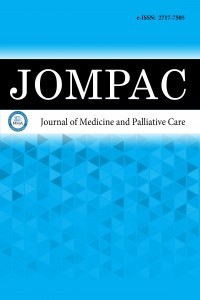1.
Guan M, Li R, Wang B, et al. Healthcare professionals’ perspectives on the challenges with managing polycystic ovary syndrome: a systematic review and meta-synthesis. <em>Patient Educ Couns</em>. 2024;123(1):108197.
2.
Rotterdam EA-SPCWG. Revised 2003 consensus on diagnostic criteria and long-term health risks related to polycystic ovary syndrome. <em>Fertility and steril</em>. 2004;81(1):19-25.
3.
Liang X, He H, Zeng H, et al. The relationship between polycystic ovary syndrome and coronary heart disease: a bibliometric analysis. <em>Front Endocrinol</em>. 2023;8(14):1172750.
4.
Barber TM, Franks S. Obesity and polycystic ovary syndrome. <em>Clin Endocrinol</em> . 2021;95(4):531-541.
5.
Karateke A, Dokuyucu R, Dogan H, et al. Investigation of therapeutic effects of erdosteine on polycystic ovary syndrome in a rat model. <em>Med Princ Prac</em>t. 2018;27(6):515-522.
6.
Gozukara IO, Pinar N, Ozcan O, et al. Effect of colchicine on polycystic ovary syndrome: an experimental study. Arch Gynecol Obstet. 2016; 293(3):675-680.
7.
Çakır E, Özbek M, Şahin M, Delibaşı T. Polycystic ovary syndrome and the relationship of cardiovascular disease risk. <em>Turk J Med Sci</em>. 2013;17 (1):33-37.
8.
Henney AE, Gillespie CS, Lai JYM, et al. Risk of type 2 diabetes, MASLD and cardiovascular disease in people living with polycystic ovary syndrome. <em>J Clin Endocrinol Metab</em>. 2024;11(1):481.
9.
Nandakumar M, Das P, Sathyapalan T, Butler AE, Atkin SL. A cross sectional exploratory study of cardiovascular risk biomarkers in non-obese women with and without polycystic ovary syndrome: association with vitamin D. <em>Int J Mol Sci</em>. 2024;25(12).6330.
10.
Stegger L, Heijman E, Schafers KP, Nicolay K, Schafers MA, Strijkers GJ. Quantification of left ventricular volumes and ejection fraction in mice using PET, compared with MRI. <em>J Nucl Med</em>. 2009;50(1):132-138.
11.
Han Y, Ahmed AI, Saad JM, et al. Ejection fraction and ventricular volumes on rubidium positron emission tomography: validation against cardiovascular magnetic resonance. <em>J Nucl Cardiol</em>. 2024;32(1):101810.
12.
Gupta VA, Nanda NC, Sorrell VL. Role of echocardiography in the diagnostic assessment and etiology of heart failure in older adults: opacify, quantify, and rectify. <em>Heart Fail Clin</em>. 2017;13(3):445-466.
13.
Baktir AO, Sarli B, Altekin RE, et al. Non alcoholic steatohepatitis is associated with subclinical impairment in left ventricular function measured by speckle tracking echocardiography. <em>A</em><em> natol J Cardiol</em>. 2015;15(2):137-142.
14.
Hamabe L, Mandour AS, Shimada K, et al. Role of two-dimensional speckle-tracking echocardiography in early detection of left ventricular dysfunction in dogs. <em>Animals</em>. 2021;11(8):2361.
15.
Mirzohreh ST, Panahi P, Zafardoust H, et al. The role of polycystic ovary syndrome in preclinical left ventricular diastolic dysfunction: an echocardiographic approach: a systematic review and meta-analysis. <em>Cardiovasc Endocrinol Metab</em>. 2023;12(4):0294.
16.
Otterstad JE. Measuring left ventricular volume and ejection fraction with the biplane Simpson’s method. <em>Heart</em>. 2002;88(6):559-560.
17.
Beghetti M. Echocardiographic evaluation of pulmonary pressures and right ventricular function after pediatric cardiac surgery: a simple approach for the intensivist. <em>Front Pediatr</em>. 2017;29(5):184.
18.
Devereux RB, Alonso DR, Lutas EM, et al. Echocardiographic assessment of left ventricular hypertrophy: comparison to necropsy findings. <em>Am J Cardiol</em>. 1986;57(6):450-458.
19.
Bruch C, Schmermund A, Bartel T, Schaar J, Erbel R. Tissue doppler imaging: a new technique for assessment of pseudonormalization of the mitral inflow pattern. <em>Echocardiography</em>. 2000;17(6):539-546.
20.
Kuznetsova T, Bogaert P, Kloch-Badelek M, et al. Association of left ventricular diastolic function with systolic dyssynchrony: a population study. <em>Eur Heart J Cardiovasc Imaging</em>. 2013;14(5):471-479.
21.
de Groot PC, Dekkers OM, Romijn JA, Dieben SW, Helmerhorst FM. PCOS, coronary heart disease, stroke and the influence of obesity: a systematic review and meta-analysis. <em>Hum reprod update</em>. 2011;17(4): 495-500.
22.
Heald AH, Livingston M, Holland D, et al. Polycystic ovarian syndrome: assessment of approaches to diagnosis and cardiometabolic monitoring in UK primary care. <em>Int J Clin Pract</em>. 2018;72(1):11.
23.
Vinnikov D, Saktapov A, Romanova Z, Ualiyeva A, Krasotski V. Work at high altitude and non-fatal cardiovascular disease associated with unfitness to work: Prospective cohort observation. <em>PLoS One. </em>2024;19 (7):0306046.
24.
Prabakaran S, Vitter S, Lundberg G. Cardiovascular disease in women update: ischemia, diagnostic testing, and menopause hormone therapy. <em>Endocr Pract</em>. 2022;28(2):199-203.
25.
Keskin Kurt R, Okyay AG, Hakverdi AU, et al. The effect of obesity on inflammatory markers in patients with PCOS: a BMI-matched case-control study. <em>Arch Gynecol Obstet</em>. 2014;290(2):315-319.
26.
Tola EN, Yalcin SE, Dugan N. The predictive effect of inflammatory markers and lipid accumulation product index on clinical symptoms associated with polycystic ovary syndrome in nonobese adolescents and younger aged women. <em>Eur J Obstet Gynecol Reprod Biol</em>. 2017;214(1):168-172.
27.
Asimi Z, Burekovic A, Dujic T, Bostandzic A, Semiz S. Incidence of prediabetes and risk of developing cardiovascular disease in women with polycystic ovary syndrome. <em>Bosn J Basic Med Sci</em>. 2016;16 (4):298-306.
28.
Ollila MM, Arffman RK, Korhonen E, et al. Women with PCOS have an increased risk for cardiovascular disease regardless of diagnostic criteria-a prospective population-based cohort study. <em>Eur J Endocrinol</em>. 2023;189(1):96-105.
29.
Forslund M, Landin Wilhelmsen K, Brannstrom M, Dahlgren E. No difference in morbidity between perimenopausal women with PCOS with and without previous wedge resection. <em>Eur J Obstet Gynecol Reprod Biol</em>. 2023;28581):74-78.
30.
Garvey WT, Mechanick JI, Brett EM, et al. American association of clinical endocrinologists and American college of endocrinology comprehensive clinical practice guidelines for medical care of patients with obesity. <em>Endocr Pract</em>. 2016;22(3):1-203.
31.
Keskin Kurt R, Nacar AB, Guler A, et al. Menopausal cardiomyopathy: does it really exist? A case-control deformation imaging study. <em>J Obstet Gynaecol Res</em>. 2014;40(6):1748-1753.
32.
Edvardsen T, Sarvari SI, Haugaa KH. Strain imaging from Scandinavian research to global deployment. <em>Scand Cardiovasc J</em>. 2016;50(5):266-275.
33.
Erdogan E, Akkaya M, Bacaksiz A, et al. Subclinical left ventricular dysfunction in women with polycystic ovary syndrome: an observational study. <em>Anadolu Kardiyol Derg. </em>2013;13(8):784-790.
34.
Kurt M, Tanboga IH, Aksakal E. Two-Dimensional strain imaging: basic principles and technical consideration. <em>Eurasian J Med</em>. 2014;46(2):126-130.

